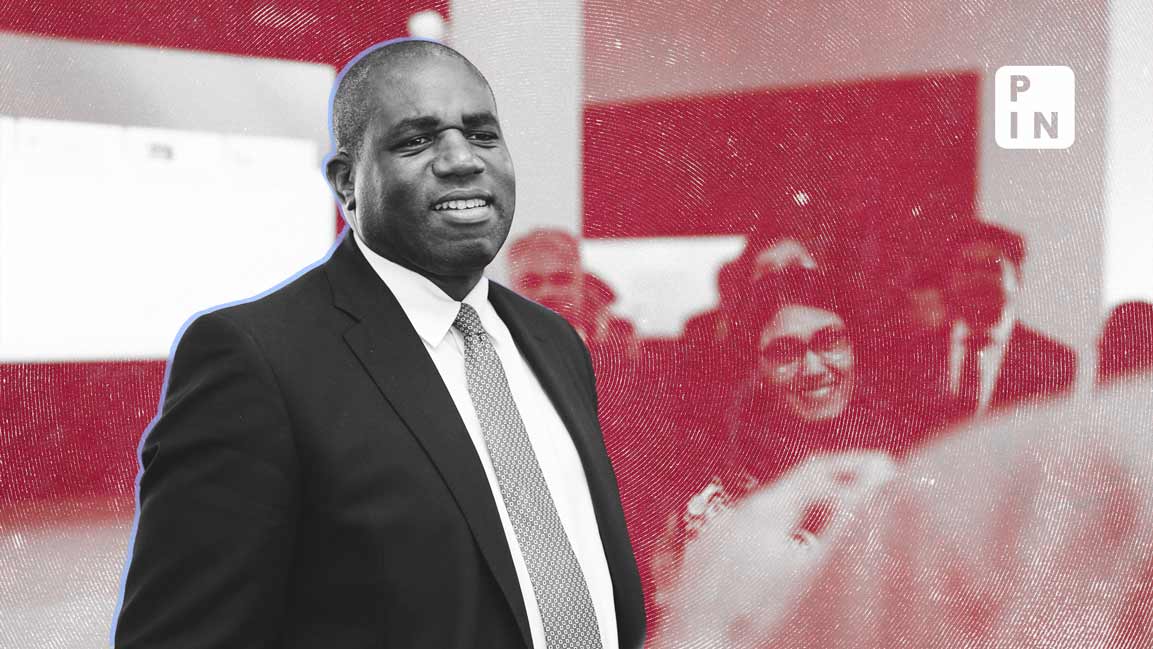- | 6:00 pm
India, Indonesia test new heights in bilateral relations
Delhi and Jakarta navigate shared vision for regional stability in diamond jubilee year of establishing diplomatic ties

Amid the ever increasing flow of Indian tourists to Indonesia, the absence of direct flight connections was a surprising gap in the otherwise strengthening tourism and bilateral ties between the two nations.
To bridge this gap, Indian airlines stepped up and introduced two direct flights to Indonesia this year.
While Vistara introduced non-stop flights from New Delhi to Bali this month, IndiGo launched direct flights between Mumbai and Jakarta, Indonesia’s capital, in August.
The launch of the Vistara flight comes as India has emerged as Bali’s second-largest source of foreign tourists, just behind Australia, with the latest tourism data showing China, the UK, and the US completing the top five.
Indian arrivals in Bali currently average between 50,000–60,000 tourists each month, with the Indonesian government looking to raise this number to 100,000, a figure that will rival Australia’s.
The timing of the launch of the Bali flight was also noteworthy as it coincided with ‘Baliyatra’ – an annual festival in in Cuttack, Odisha, that is not widely known. The festival commemorates the day ancient Odia mariners set sail for Bali, Java and other regions in Indonesia, underscoring the longstanding maritime and trade connections between the two regions.
Last week, the Southeast Asian country, in a move to further boost its tourism sector, announced plans to permit visa-free entry for citizens of countries including Indians, Chinese and Americans.
“India and Indonesia have been ancient trade partners. This growing connectivity will lead to more scope for rediscovering each other,” Malvika Priyadarshini, head of the economic and commerce wing at the Indian embassy in Jakarta, said.
The launch of the new flights also come close on heels of both nations commemorating 75 years of the establishment of diplomatic relations next year, Priyadarshini noted.
Maritime neighbors in a strategic region
India and Indonesia are strategically important in the Indo-Pacific region, located at a crucial intersection and surrounded by vital maritime routes and chokepoints.
Indonesia, the largest archipelago nation in Southeast Asia, is a prominent bridge that connects the Indian Ocean with the Pacific Ocean through its more than 17,000 islands, giving it access to South Asia, the Middle East, East African Countries, China, the US, and Australia.
“New Delhi and Jakarta share a vision for an Indo-Pacific region based on international law, inclusivity, and equal security and development. Importantly, India’s Indo-Pacific Ocean Initiative aligns well with the Asean Outlook on the Indo-Pacific (AOIP), influenced significantly by Indonesia’s diplomatic efforts,” Don Maclain Gill, a Manila, Philippines-based geopolitical analyst, said.
“This is where Jakarta’s partnership with New Delhi fits well. Both sides have a mutual understanding that their strengthening partnership will never be a means to any rigid coalition. Instead, their cooperation surpasses binary power competitions and reflects their shared interests, concerns, and goals. This is why we can see a continuous upswing of ties between comprehensive strategic partners,” Gill, who is also director for South and Southeast Asia at the Philippine-Middle East Studies, said.
Impending change of guard
Indonesia holds strategic importance for both China, as a central trade hub, and the US, as a cornerstone of democracy in the Indo-Pacific region. An impending change of guard in Jakarta has thus drawn global attention.
Next year, the world’s largest and the third largest democracies, India and Indonesia, will hold their respective general elections. Prime Minister Narendra Modi of India and Indonesian President Joko Widodo (Jokowi) are known for their focus on development through manufacturing and infrastructure.
Modi’s ‘Make in India’ initiative and Jokowi’s ‘Making Indonesia 4.0′ strategy mirror the leaders’ aspirations to boost local manufacturing and establish their countries as global manufacturing hubs, researchers Prem Singh Gill and Gerardus Rino Pradipta Yosari wrote in The Diplomat in September.
A constitutional rule prevents Jokowi from seeking a third term, unlike in India where no such restriction exists. The contenders in Indonesia’s election are former education minister and Jakarta governor Anies Baswedan; defense minister Prabowo Subianto and former central Java governor Ganjar Pranowo.
The Indonesian elections, for which campaigning began this week, are significant. The world is keenly watching how the new leader will balance international relations, especially in the Indo-Pacific region.
The Economist Intelligence Unit (EIU), in a report this month on the likely outcome in polls to nine Asian parliaments next year, said, “In Indonesia, we expect a run-off presidential election in mid-2024, as no candidate will be able to secure a simple majority in the first round (in February).”
“With implicit support from Jokowi, we expect Subianto to win eventually. He is supported by his running mate, Gibran Rakabuming Raka, the governor of Surakarta and the eldest son of Jokowi,” EIU said in the report.
Indonesia at heart of US’ Indo-Pacific strategy
The choice of Jakarta as the venue for US secretary of state Antony Blinken to present the Biden administration’s Indo-Pacific vision in December 2021 was deliberate. Indonesia plays a key role in the US’s Indo-Pacific strategy for the 21st century, but its significance in US foreign policy is often not fully grasped as Jakarta firmly maintains a foreign policy that is independent.
The lack of substantial US economic involvement also diminishes its appeal to Indonesia, a nation seeking robust growth opportunities.
During US President Joe Biden’s meetings with Jokowi this year in the region and in Washington (in November), the latter has highlighted Indonesia as a vital and dynamic partner. Both leaders have underscored their nations’ roles as major democracies collaborating to uphold a rules-based international system and order.
“Jakarta, however, is cautious about aligning too closely with the US due to the ongoing US-China power struggle,” Manila-based Gill said, adding: ” Both India and Indonesia, recognizing the need for strong ties amid global polarization, prefer to maintain strategic autonomy.”
“China, however, is never happy about its immediate neighbors engaging with democratic powers like India. However, by nature, Southeast Asian countries typically adopt multi-aligned strategies to navigate the region’s uncertainties,” Gill said.
Indonesia’s Chinese connection
Indonesia and China maintain a complex relationship marked by both cooperation and competition. Economically intertwined, China stands as one of Indonesia’s primary trading partners, heavily investing in infrastructure and resource sectors.
Despite strong economic ties, tensions exist, notably in the South China Sea, where Indonesia challenges China’s territorial assertions. Yet, both nations persist in diplomatic and economic dialogues, striving to balance their own interests with mutual goals.
Chinese investment in Indonesia, largely state-driven, targets public infrastructure projects, often in collaboration with Indonesian state-owned enterprises and funded by Chinese state-owned banks.
As Southeast Asia’s largest beneficiary of the Belt and Road Initiative (BRI), Indonesia has utilized the program to fund its first high-speed train project and attract substantial investment in nickel processing, thus leveraging a key mineral resource.
Amid this complex dynamic, Jokowi’s January 2020 ban on nickel ore exports seeks to boost domestic value-added nickel production. However, China’s substantial investments in Indonesia’s nickel supply chain, at $47 billion as reported by ABC News Australia, raise eyebrows. This investment is a crucial part of the BRI projects in Southeast Asia.
The cautionary tale here is that Indonesia’s reliance on Chinese investment and expertise in the nickel industry may pose risks to its electric vehicle ambitions and its overall economic growth, similar to how Saudi Arabia’s economic health is closely tied to its oil reserves.
Balancing national interests with foreign investment remains a delicate act for Indonesia in its journey towards sustainable and independent economic growth.
Bilateral trade skewed towards Indonesia
On the India-Indonesia bilateral front, trade is skewed in favor of Indonesia, primarily due to Indian imports of coal, vegetable oil and minerals.
In fiscal 2023, India exported $10.2 billion worth of goods to Indonesia, including food commodities such as rice and wheat, chemicals, metals, and machinery, while Indonesia exported goods valued at $28.82 billion, data showed.
“A global economic downturn, rising material costs, and reduced Western demand has affected some industries in Indonesia,” Priyadarshini said, adding that the Indian government’s ban on export of certain food items, aimed at domestic protection against the impact of the El Nino weather phenomenon, has led to a search for new and sustainable trade avenues.
“India is now focusing on alternative commodities such as bovine meat, millets, and dairy, alongside service sectors like IT, healthcare, and tourism, to maintain robust trade dynamics with Indonesia,” Priyadarshini added.
Opportunities in Indonesia’s Nusantara project
Meanwhile, Indian businesses have shown keen interest in Nusantara, Indonesia’s ambitious new capital project, Priyadarshini said.
Nusantara is Indonesia’s planned new capital city, intended to replace Jakarta as the administrative and political center of the country.
Indian hospital chain Apollo is already collaborating with Indonesia’s Mayapada Hospital Group to set up a hospital in the new capital that is coming up on Borneo Island, Priyadarshini said, adding that plans are afoot to organize a delegation-level visit to gain a deeper understanding of the project.
India is also actively engaged with Indonesia to overhaul the latter’s healthcare system, she said, while highlighting that both countries are looking to scale up bilateral trade to about $50 billion from about $40 billion now.
On the socio-cultural front, New Delhi is also looking to highlight and strengthen the deep-rooted connection between Indian and Indonesian cultures, Priyadarshini added.
Scope for improvement
Gurjit Singh, former Indian ambassador to Indonesia and the Association of Southeast Asian Nations (Asean), said relations between India and Indonesia have not reached their full potential yet.
“Indonesia is India’s largest bilateral trade partner in Asean, but the trade balance is in favor of them. In terms of Indian investment, the country has failed to create a level playing field for Indian businesses investing there,” Singh said.
“While it is true that India-Indonesia relations have improved during Jokowi’s tenure to some extent, this is not because of the Indonesian government’s efforts but rather due to the increasing number of Indian tourists visiting Indonesia and more Indian companies investing there,” he added.
Highlighting a case in point, Singh said that in light of the significant number of Indian tourists visiting Bali, the lack of direct flights until now was a notable gap.
While tourism ties are robust, the broader strategic and diplomatic relations seem to be operating on “auto-pilot mode,” Singh added.
This is part of a series exploring India’s ties with Southeast Asian nations.













